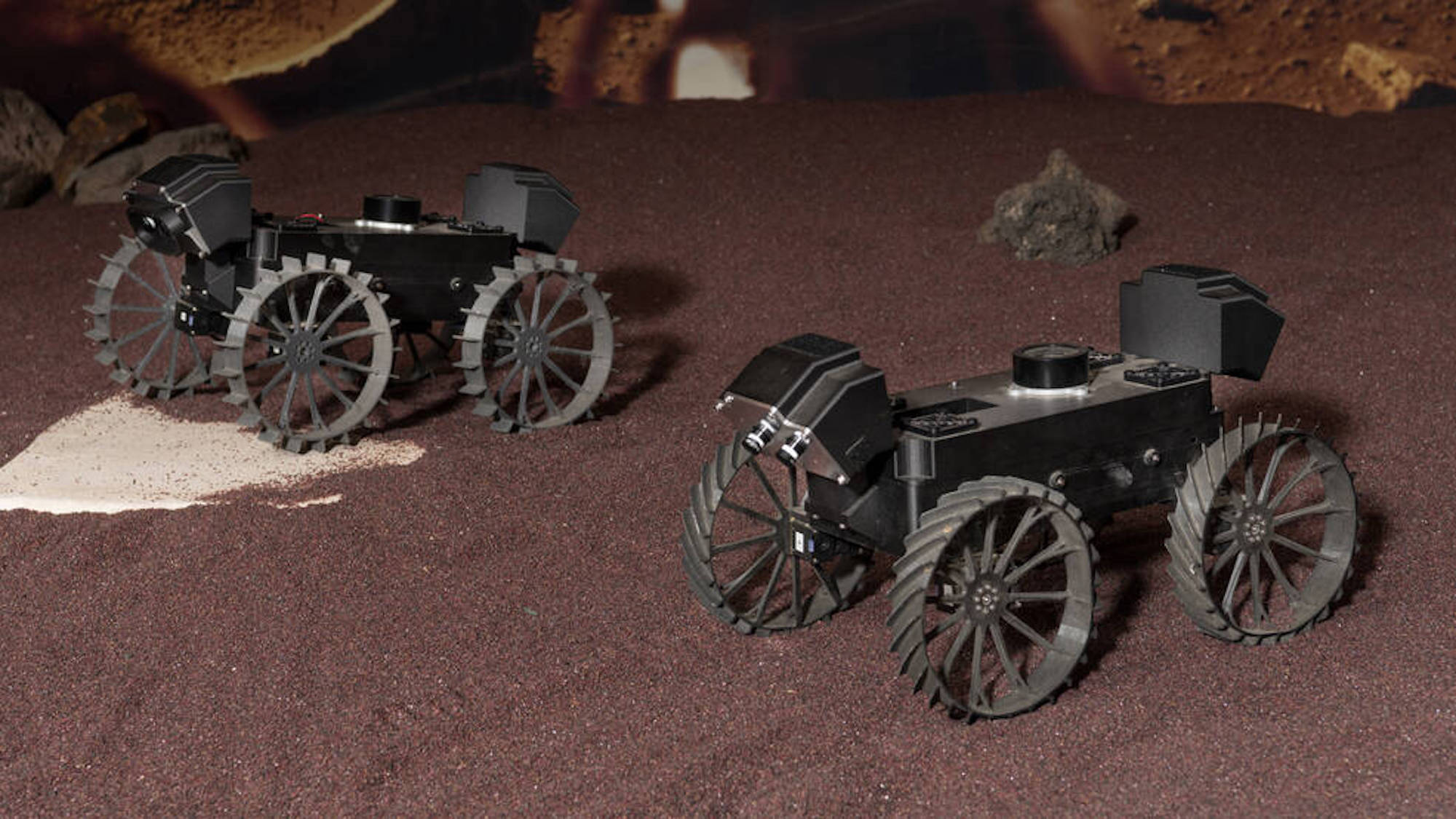

A team of small, solar-powered rovers are traveling to the moon next year. There, they will attempt to autonomously organize and carry out a mission with next-to-no input from NASA’s human controllers. If successful, similar robotic fleets could one day tackle a multitude of mission tasks, thus allowing their human team members to focus on a host of other responsibilities.
Three robots, each roughly the size of a carry-on suitcase, comprise the Cooperative Autonomous Distributed Robotic Exploration (CADRE) project. The trio will descend onto the lunar surface via tethers deployed by a 13-foot-tall lander. From there, NASA managers back on Earth, such as CADRE principal investigator Jean-Pierre de la Croix, plan to transmit a basic command such as “Go explore this region.”
[Related: Meet the first 4 astronauts of the ‘Artemis Generation’.]
“[T]he rovers figure out everything else: when they’ll do the driving, what path they’ll take, how they’ll maneuver around local hazards,” de la Croix explained in an August 2 announcement via NASA. “You only tell them the high-level goal, and they have to determine how to accomplish it.”
The trio will even elect a “leader” at their mission’s outset to divvy up work responsibilities, which will reportedly include traveling in formation, exploring a roughly 4,300 square foot region of the moon, and creating 3D topographical maps of the area using stereoscopic cameras. The results of CADRE’s roughly 14-day robot excursion will better indicate the feasibility of deploying similar autonomous teams on space missions in the years to come.

As NASA notes, the mission’s robot trifecta requires a careful balance of form and function. Near the moon’s equator—where the CADRE bots will land—temperatures can rise to as high as 237 degrees Fahrenheit. Each machine will need to be hardy enough to survive the harsh lunar climate and lightweight enough to get the job done, all while housing the computing power necessary to autonomously operate. To solve for this, NASA engineers believe installing a 30-minute wake-sleep cycle will allow for the robots to sufficiently cool off, assess their respective heath, and then elect a new leader to continue organizing their mission as necessary.
“It could change how we do exploration in the future,” explains Subha Comandur, CADRE project manager for NASA’s Jet Propulsion Laboratory. “The question for future missions will become: ‘How many rovers do we send, and what will they do together?’”
